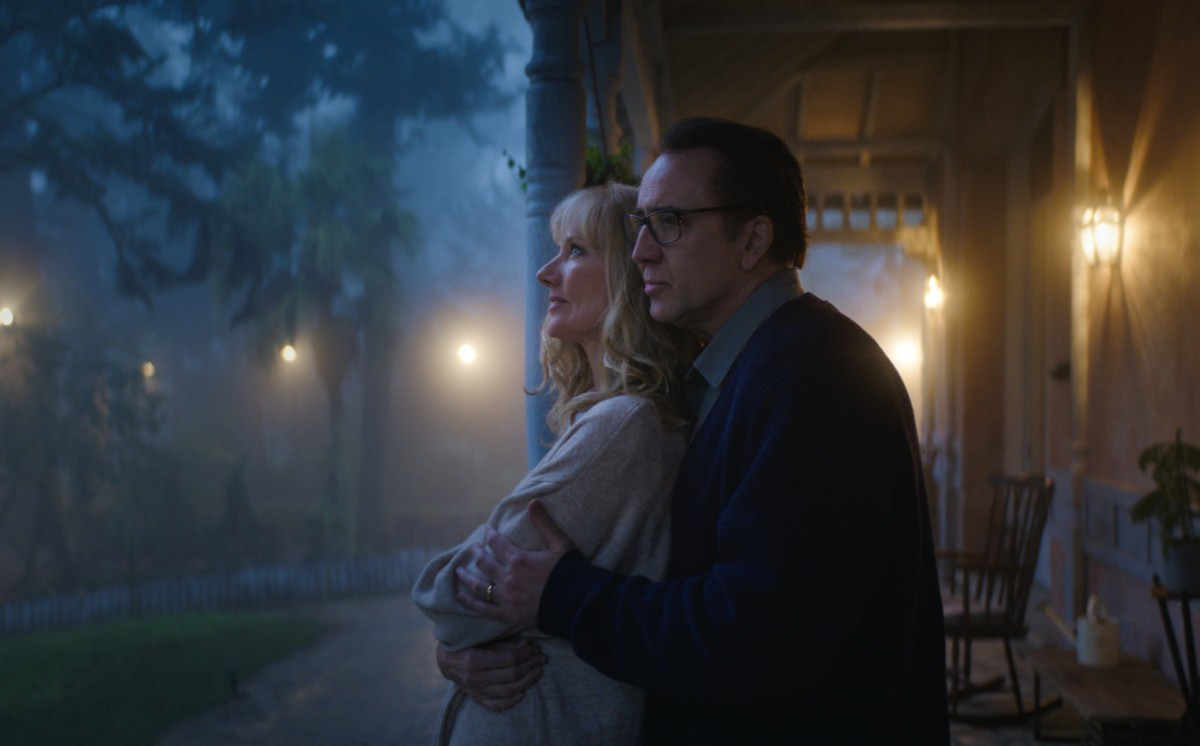“A Nicolas Cage movie” is defined by more than simply starring the inimitable Nicolas Cage. A true film du Cage loosens its grip on realism to embrace expressionistic freedom in both his performance and the overall tone of the vessel for it. Over the past few years, Cage has taken this concept and run with it to some fascinating places, more out-there in the bizarro-arthouse sense of “Mandy” than the barely-existent direct-to-video sense. (Though he’s done plenty of those, too.) Richard Stanley’s new Lovecraft adaptation “Color Out of Space” fits the bill within its first few minutes, as alcoholic dad Nathan (Cage) bellows at his children Benny (Brendan Meyer) and Lavinia (Madeleine Arthur) to look after their alpacas. He punches the second syllable and lets the third hiss for a fraction of a second, breathing strange new life into a word we’ve heard before. With that, the Cage has locked in.
READ MORE: 2019 Toronto International Film Festival: 25 Most Anticipated Movies
He’s the ideal candidate to star in this eldritch head trip, set in motion by the arrival of a mysterious meteorite in the back yard of the lush New England home out in what one police officer deems “the sticks.” It radiates an unholy pink glow that will come to seep literally into nature surrounding it, and figuratively into the fabric of Steve Annis’ cinematography. It spreads madness in the air and the projector, as the family members lose their minds in tandem with Stanley’s headlong leap into lunatic grotesquerie. Your mileage may vary, but if you’re someone intrigued by massive skitter spider-mutants, then you will go far.
Weirdness means nothing without artistry — compare the average Troma shart to, well, “Mandy” again — and Stanley still has the chops after nearly three decades out of the narrative-feature-directing game. Stanley ratchets up the off-kilter humor while playing down the deep melancholy present in the short story’s original text. This observation could be seen as a knock on the director’s approach, but for audiences going in with zero expectations beyond a good time, the interlaced humor feels like nothing more than playing to Cage’s unique strengths.
READ MORE: 2019 Fall Preview: The 45 Most Anticipated Films
More to the point would be the slow encroachment of distortion and insanity on their home, and Stanley’s innovative visualizations of what Lovecraft left as pure abstraction. He makes a valiant effort to answer the unanswerable question of what a deteriorating reality might look like to someone trapped inside it, deploying CGI at times selectively, to tip one element of a shot off its axis of normalcy, and at others maximally, to plunge the audience into a vortex of bad-vibes psychedelia. That’s not to say this is all in the Gardner family’s heads, however. Pushing the entry-level experimental biology of “Annihilation” to horrific new highs, the film designates the Gardner household as an epicenter for a radial field of DNA-scrambling juju. The aforementioned alpacas, so friendly and cuddly in their first appearance? Things don’t go so hot for them.
READ MORE: The 100 Most Anticipated Films Of 2019
On a purely sensory level, Stanley has whipped up a mold-caked feast, but it doesn’t stick to the ribs for long. The matter of what it’s all for lingers past the credits, perhaps addressed with more depth in Lovecraft’s writing, but slyly shrugged off here. Stanley’s focus falls on the family dynamic; between Dad boozing, Mom (Joely Richardson) in remission from cancer, Benny sneaking off to burn a joint at every possible opportunity, and Lavinia dabbling with Wiccan forces beyond her control, everyone under the roof feels out of step with one another. One graspable reading would suggest their individual mental breakdowns reflect their status as a group of people bound together and yet unable to understand each other. Another stab at interpretation could focus on their impulses for various forms of self-harm, as if the meteorite had been unconsciously summoned to give them the destruction they crave.
Even if he’s not totally lucid about it, Stanley gives adventurous midnight-movie crowds enough to mull over while they’re having their hair blown back by an onslaught of light and sound. Indie music world stalwart Colin Stetson contributes a score of sinister synths that reinforces the hallucinatory atmosphere, perfectly replicating the feeling of noise coming from the inside of your skull. He’s just one more weapon in the stylistic arsenal that Stanley commands, an armory’s worth of tricks and formal manipulations — the eerie pink gives a blue and red penumbra to everything its light touches, for one example, making some shots look like primitive 3-D seen without the retro glasses. Stanley makes movies as only he can, and if that means defying comprehension every now and then, that’s just the price of admission to his insular hellworld. [B]
Click here for our complete coverage from this year’s Toronto International Film Festival.





